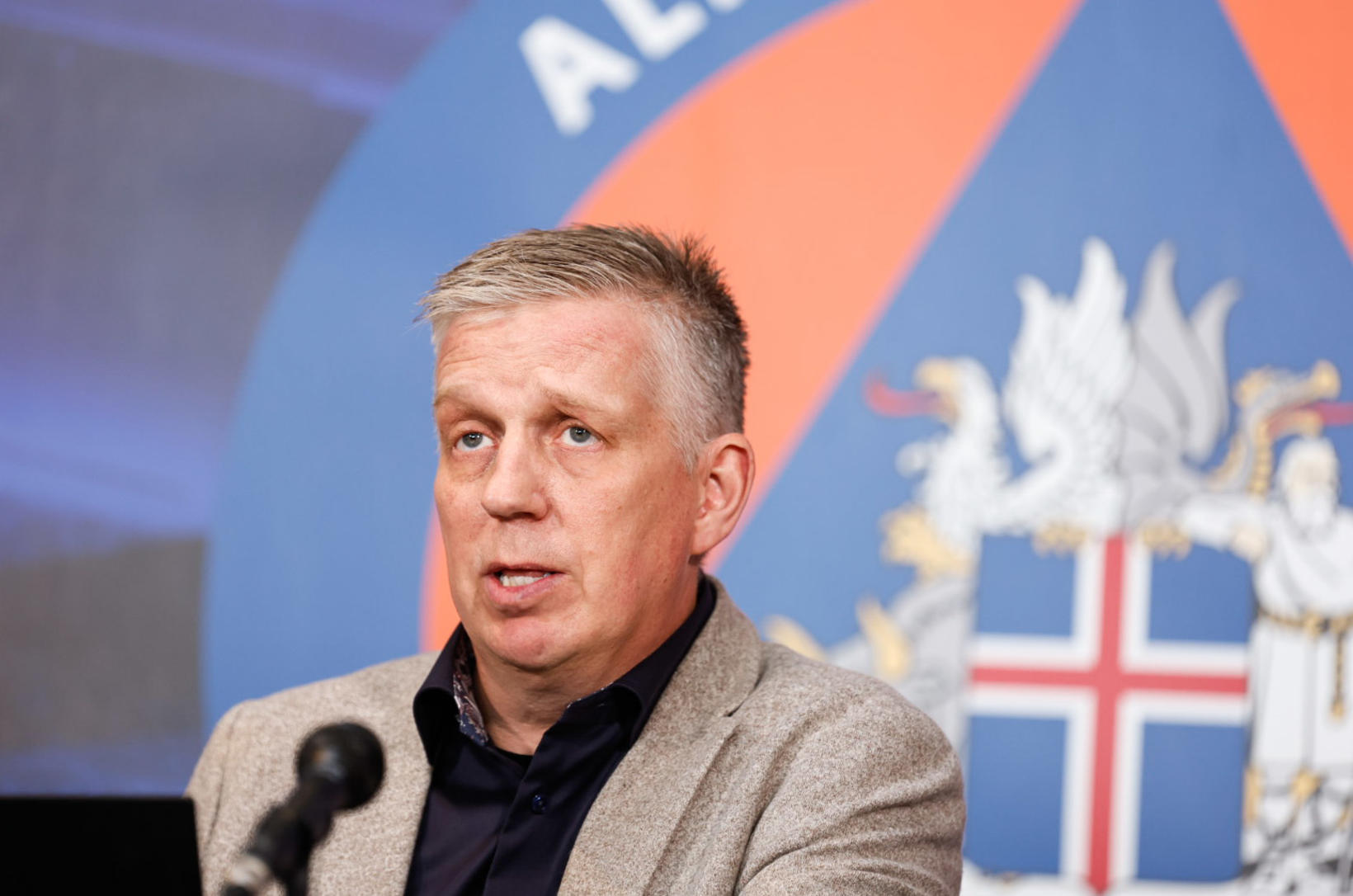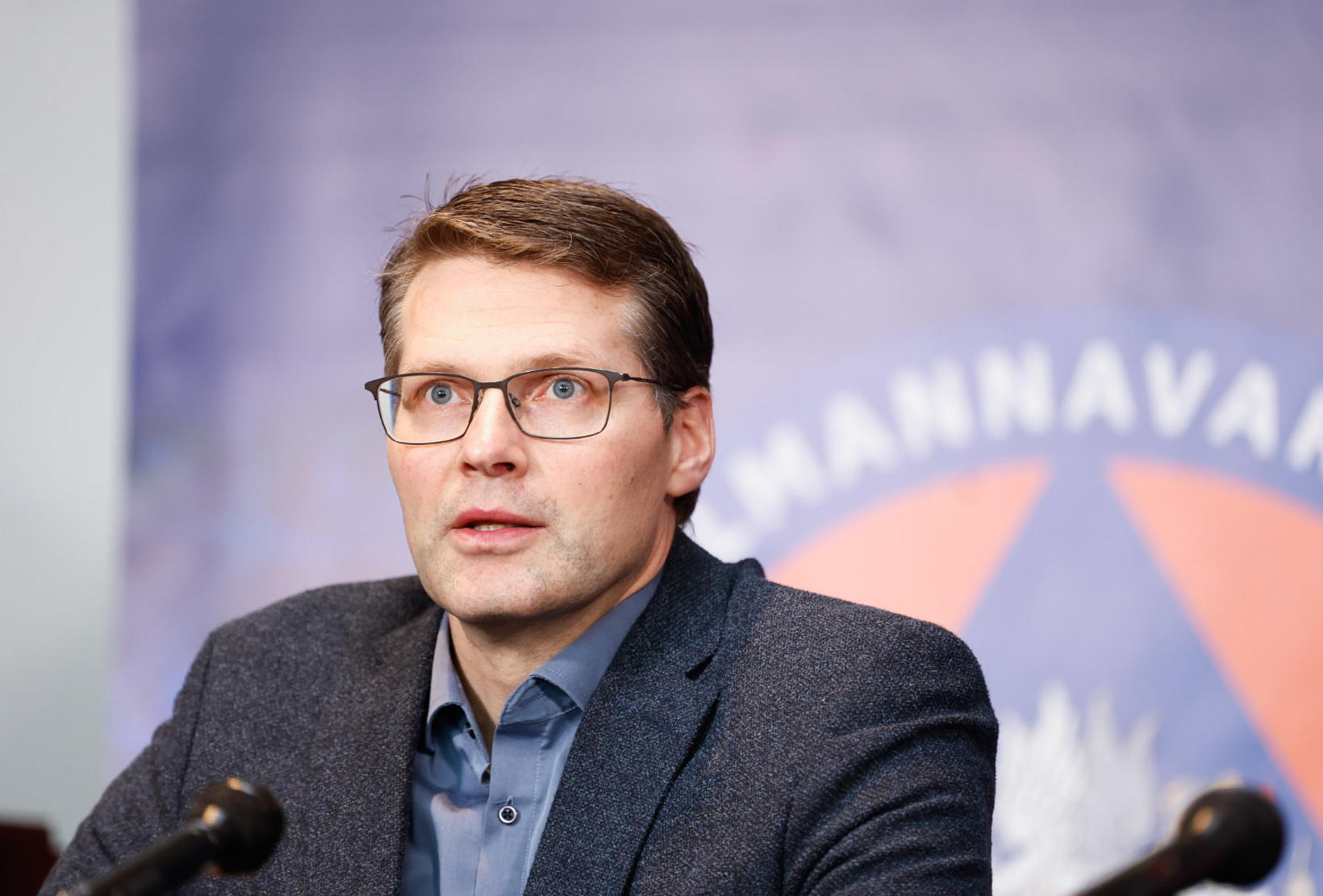The lava ledge is one metre thick and six million cubic metres large
Kristín Jónsdóttir, from the Icelandic Met Office at the information briefing of the Department of Civil Protection and Emergency Management that was held today at 3 pm. mbl.is/Eggert Jóhannesson
The accumulated magma that has been created at Mt. Þorbjörn is estimated to be about one metre thick and about six million cubic metres.
This was in the statement of Kristín Jónsdóttir, the director of monitoring natural disasters at the Icelandic Met Office, at a briefing held by the Department of Civil Protection and Emergency Management today at 3 pm.
The magma intrusions at Mt. Þorbjörn are different from those at Fagradalsfjall in that they lie horizontally in ledges but not vertically. Such ledges can grow long and grow very large without an eruption. The ledge thickens gradually and spreads to the sides.
It is not possible to answer whether, where and when an eruption will occur but the probability of answering it increases with each day.
The most likely places to see an eruption are west and north of Mt. Þorbjörn and to Sýlingarfell. There is no evidence of magma near the surface, according to the current situation, Jónsdóttir said.
Since the beginning of the seismic swarm on the Reykjanes peninsula, about 10 thousand earthquakes have been detected.
Víðir Reynisson, the director of Civil Protection said that all plans were in place and the institution was well prepared. mbl.is/Eggert Jóhannesson
“Well prepared”
Víðir Reynisson, Director of Civil Protection, said nature was unpredictable but mentioned that as early as January 2020, plans were prepared to keep the public safe. Plans for evacuation had been drawn up and updated regularly.
“Our assessment is that we are well prepared and we will be better prepared every day,” he said.
Checking ways to inject water on the lava field
CEO of HS Orka, Kristinn Harðarson, said the company has worked on its response plans, which were largely about how to ensure the safety of employees and contractors. It was important to ensure continuity of operations.
He said that if there were an evacuation due to a volcanic eruption, shift workers would evacuate Svartsengi, but the operation would be remotely controlled from the Reykjanes power plant.
He also mentioned that the company had looked into ways to inject water into lava so that it could possibly slow down the lava flow to protect the power plant.
“It might be possible to install a control system that could direct lava flow in other directions and protect the power plant in that way,” Harðarson said.
It is possible to cover drilling holes with gravel and sand filling to be able to restart operations after an eruption.
Reserve engines would take over
Páll Erland, CEO of HS Veitur, said the company has prepared for possible power outages in Grindavík. Reserve engines would take over in Grindavík if no power would be received from other sources. The first reserve engines are due to arrive today from Landsnet.
“As necessary, there are enough machines that can cover this general electricity use in Grindavík, both for homes and public companies and institutions,” Erland said.
As for Fitjar in Reykjanesbær, the company is better placed for electricity transmission systems and is connected from three locations. Although Svartsengi would be eliminated, he said that electricity would come from other routes.
There will be an open meeting of residents in Reykjanes on Wednesday, he added, where there will be a closer look at the issues.


/frimg/1/44/99/1449922.jpg)



/frimg/1/0/57/1005798.jpg)





